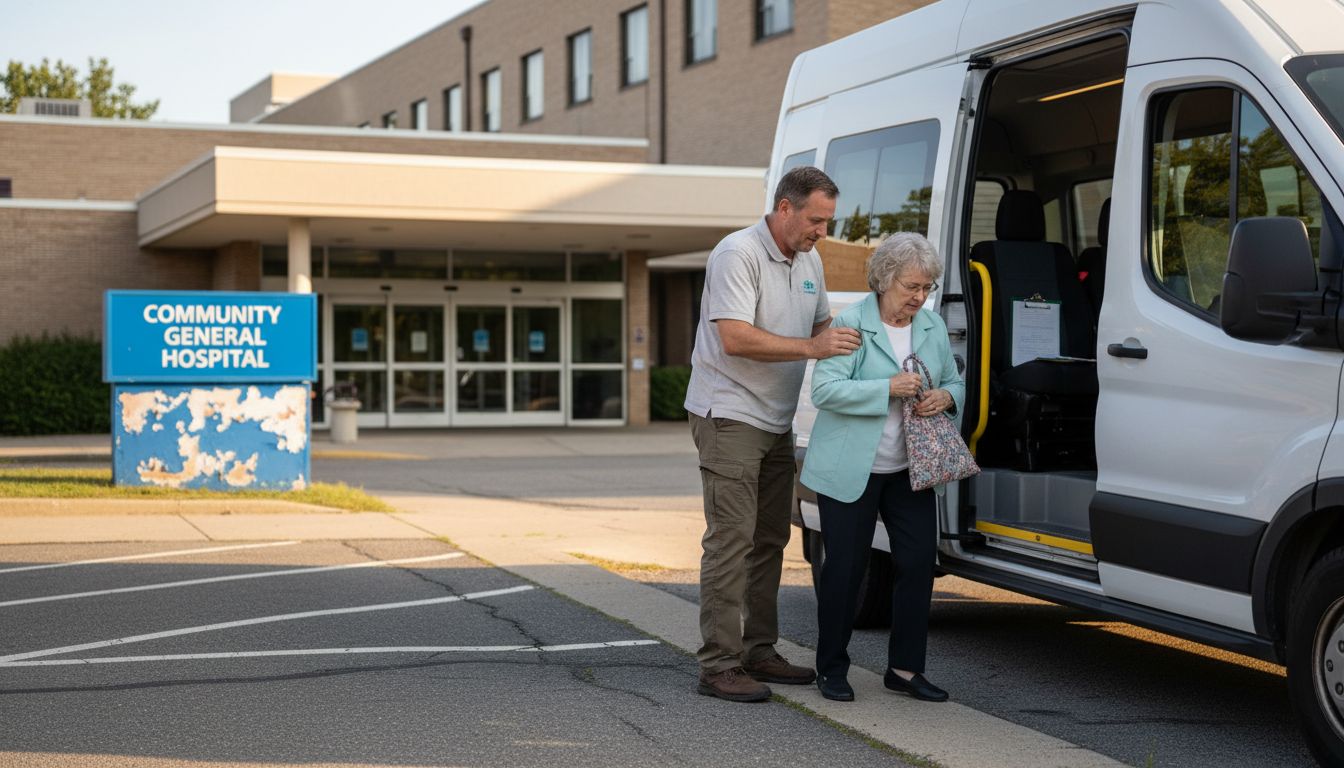Understanding Urgent Medical Transport: Key Concepts
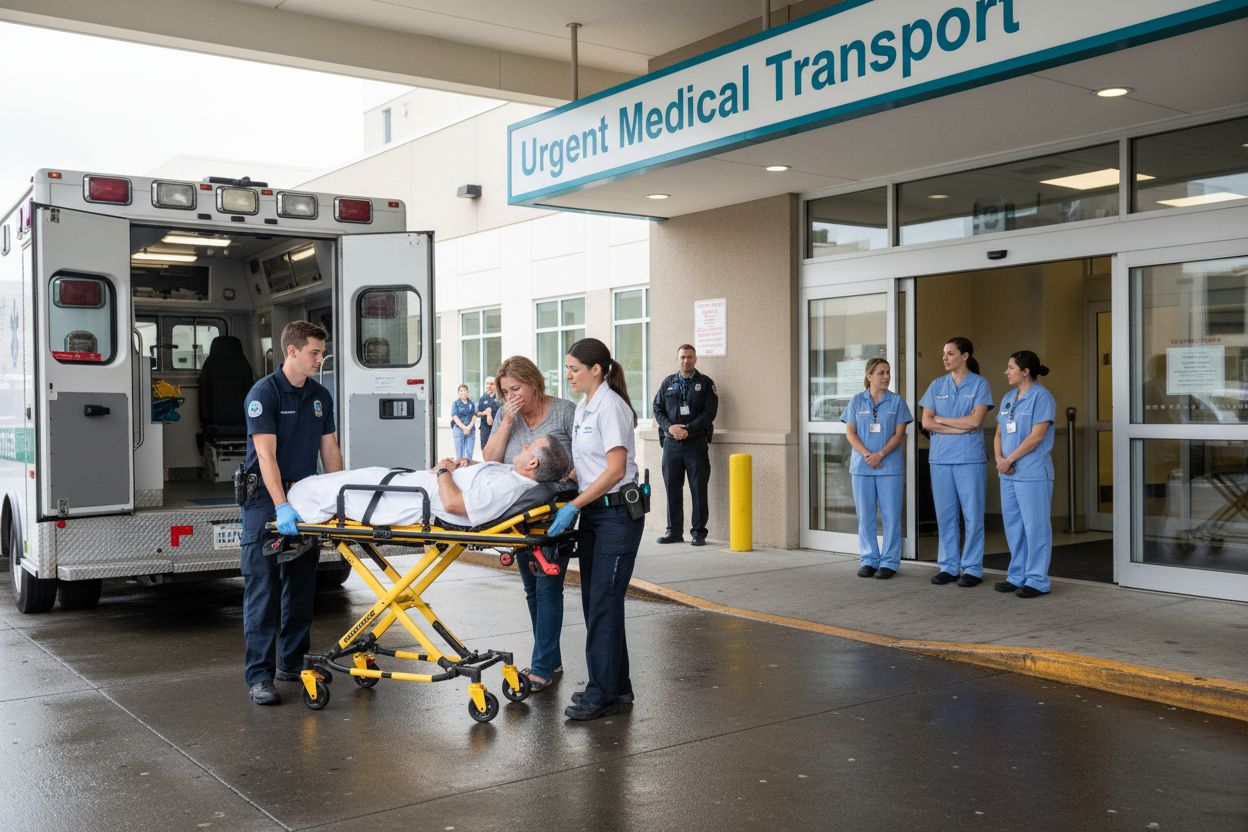
Every second counts when someone faces a life-threatening emergency and needs urgent medical care. Across the country, rapid medical transport can slash mortality rates for heart attacks, strokes, and severe trauma. Many people picture flashing lights and loud sirens, but that barely scratches the surface. Surprisingly, the real story is about the split-second teamwork and cutting-edge tech that moves patients faster than ever before.
Table of Contents
- What Is Urgent Medical Transport And Its Purpose?
- The Importance Of Timely Medical Transport In Emergencies
- How Urgent Medical Transport Systems Operate
- Key Challenges And Innovations In Urgent Medical Transport
Quick Summary
| Takeaway | Explanation |
|---|---|
| Immediate transport saves lives | Urgent medical transport minimizes treatment delays, enhancing survival chances during emergencies. |
| Critical time windows matter | Certain emergencies, like strokes or trauma, require rapid intervention within defined time limits for effective care. |
| Transport modes are tailored | Selecting between ground ambulances, helicopters, and aircraft depends on patient needs and circumstances. |
| Technology enhances efficiency | Innovations like GPS tracking and AI optimize medical transport logistics, improving response times and care quality. |
| Challenges necessitate innovation | Resource limitations and geographic barriers in emergency medical transport spur the need for continuous technological advancements. |
What is Urgent Medical Transport and Its Purpose?
Urgent medical transport represents a critical healthcare service designed to rapidly move patients requiring immediate medical intervention from one location to another. According to federal emergency medical guidelines, these specialized transportation services are essential for ensuring patients receive timely, life-saving medical care during critical health emergencies.
The Core Purpose of Urgent Medical Transport
The primary objective of urgent medical transport is to minimize treatment delays and maximize patient survival chances during medical crises. These services bridge the critical gap between emergency situations and definitive medical care, ensuring patients are swiftly transferred to facilities equipped to manage their specific medical needs. Medical research confirms that rapid medical transport can significantly reduce mortality rates for conditions like heart attacks, strokes, and severe trauma.
Key purposes of urgent medical transport include:
- Rapid patient evacuation from accident or emergency scenes
- Immediate stabilization and medical intervention during transport
- Safe and efficient transfer between medical facilities
- Providing specialized medical care en route to hospitals
Types of Urgent Medical Transport
Urgent medical transport encompasses multiple transportation modes tailored to different medical scenarios. These include ground ambulances for local emergency transfers, helicopters for rapid long-distance or hard-to-reach area transports, and specialized medical aircraft for critical inter-hospital patient movements. Learn more about our comprehensive patient transfer solutions that optimize these critical medical logistics.
Each transport method is strategically selected based on factors like patient condition, distance, terrain, and required medical interventions.
Below is a table organizing the main types of urgent medical transport and their key characteristics to aid in quick comparison during emergencies.
| Transport Mode | Typical Use Cases | Strengths | Limitations |
|---|---|---|---|
| Ground Ambulance | Local emergency transfers; urban & suburban areas | Widely available; cost-effective | Slower over long distances |
| Helicopter (Air Ambulance) | Rapid response for remote or hard-to-reach locations | Fast over varied terrain; avoids road delays | Weather-dependent; costlier |
| Medical Aircraft | Critical inter-hospital, long-distance patient transfer | Long-range, advanced care capabilities | High cost; requires airstrips |
| Highly trained medical professionals, equipped with advanced life-support technologies, accompany patients to ensure continuous monitoring and immediate medical response during transportation. |
The Importance of Timely Medical Transport in Emergencies
Timely medical transport represents a critical lifeline in emergency medical scenarios, where every minute can determine patient survival and long-term health outcomes. Research from medical emergency studies demonstrates that rapid transportation can dramatically reduce mortality rates and prevent potential permanent medical complications.
Critical Time Windows in Emergency Care
Medical emergencies often involve time-sensitive conditions where immediate intervention is paramount.
The table below summarizes critical time windows for common emergency medical conditions as discussed in the article, highlighting the importance of timely intervention.
| Emergency Condition | Critical Time Window | Key Impact of Delay |
|---|---|---|
| Stroke | 3-4.5 hours | Reduced treatment effectiveness |
| Cardiac Arrest | 4-6 minutes without oxygen | Potential brain damage |
| Trauma (Golden Hour) | Within 60 minutes | Increased risk of mortality |
| Severe Bleeding | 10-15 minutes | Rapid decline if not stabilized |
| Certain medical scenarios have defined critical time windows that directly impact patient prognosis: |
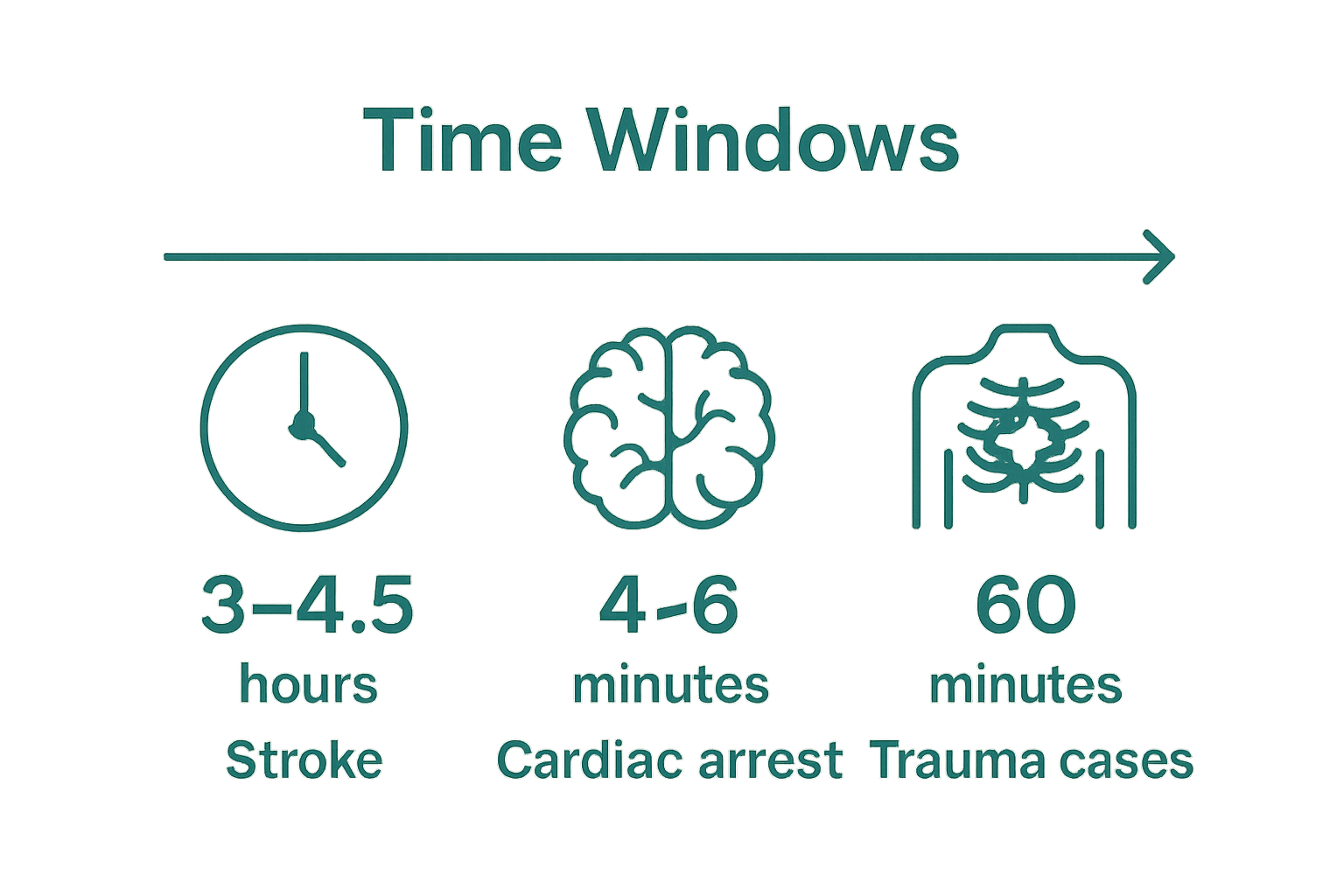
- Stroke treatment: Maximum 3-4.5 hours for effective intervention
- Cardiac arrest: Brain damage can begin within 4-6 minutes without oxygen
- Trauma cases: Golden hour principle requires definitive care within 60 minutes
- Severe bleeding: Critical stabilization needed within 10-15 minutes
Factors Influencing Emergency Medical Transport Effectiveness
Multiple interconnected factors determine the effectiveness of urgent medical transport. Patient outcomes depend on rapid decision making, appropriate vehicle selection, and skilled medical personnel. Explore our comprehensive patient transfer solutions that optimize these critical medical logistics.
Professional emergency medical teams must rapidly assess patient condition, select appropriate transportation mode, and execute seamless transfers between emergency sites and definitive medical facilities. Sophisticated medical equipment, real-time communication systems, and highly trained professionals working in synchronized coordination ensure patients receive continuous, high-quality care throughout their transportation process.
How Urgent Medical Transport Systems Operate
Urgent medical transport systems function through intricate, highly coordinated networks designed to provide rapid emergency medical response. According to federal emergency medical guidelines, these complex systems integrate multiple critical components to ensure swift and effective patient care during medical emergencies.
Core Components of Emergency Medical Transport Networks
Emergency medical transport systems encompass several interconnected operational elements that work synchronously to deliver life-saving services:
- Dispatch Centers: Central communication hubs that receive emergency calls, assess situation severity
- Emergency Response Teams: Trained medical professionals prepared for immediate deployment
- Transportation Vehicles: Specialized ambulances, helicopters, and medical aircraft
- Healthcare Facilities: Receiving hospitals and trauma centers
- Communication Technologies: Advanced radio and digital communication systems
Decision Making and Resource Allocation
The operational workflow of urgent medical transport relies on sophisticated triage protocols and real-time decision making. Medical dispatchers rapidly evaluate emergency situations, determining the most appropriate response based on patient condition, location, and available resources. Learn more about our advanced medical logistics platforms that streamline these critical operational processes.
Highly trained emergency medical technicians and paramedics assess patient needs within minutes, selecting optimal transportation methods and preparing specialized medical interventions during transport. The entire system operates on principles of speed, precision, and continuous patient monitoring, ensuring that every second counts in delivering life-saving medical care.
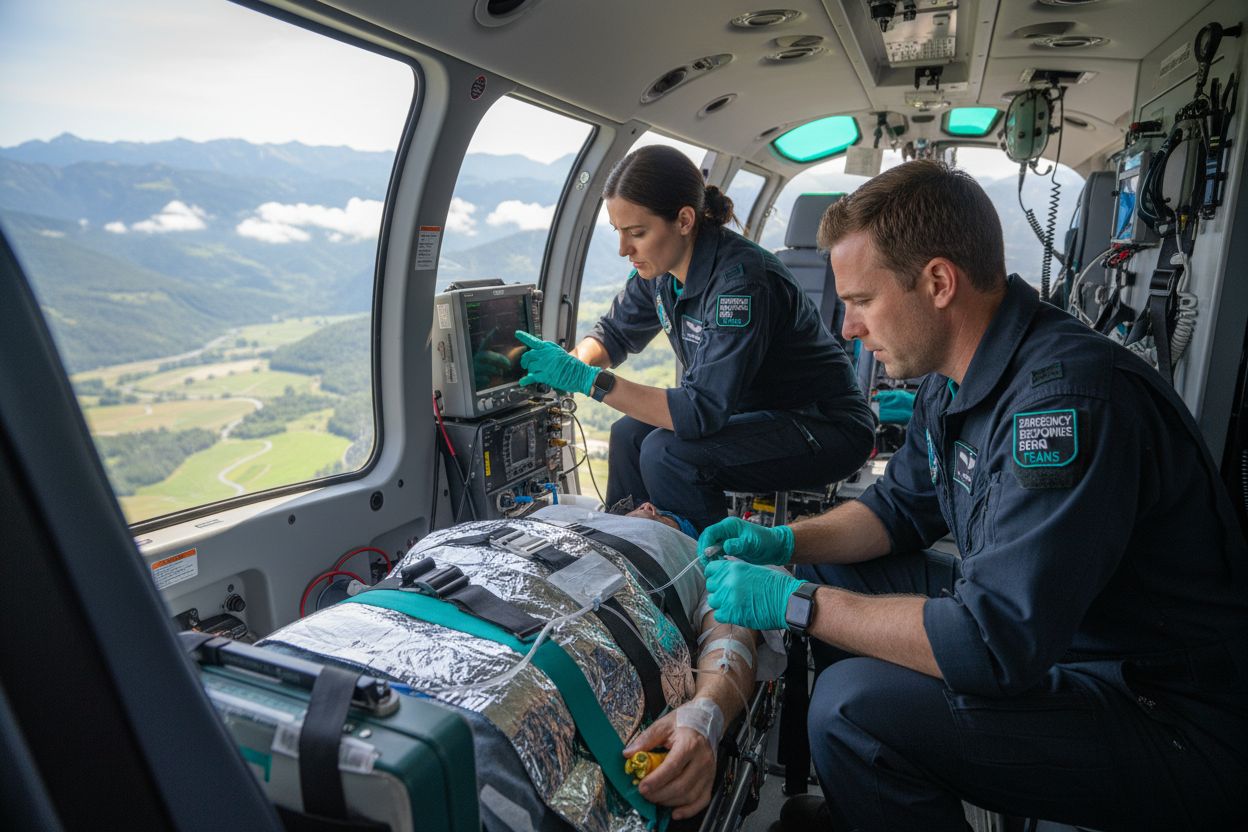
Key Challenges and Innovations in Urgent Medical Transport
Urgent medical transport systems face complex challenges that demand continuous technological and operational innovation. Advanced medical research highlights the critical need for adaptive strategies to address emerging healthcare transportation complexities.
Primary Operational Challenges
Urgent medical transport systems encounter multifaceted obstacles that significantly impact their effectiveness:
This table outlines major operational challenges faced by urgent medical transport systems, together with a corresponding summary of each obstacle.
| Challenge | Description |
|---|---|
| Resource Limitations | Shortage of ambulances, personnel, or funding |
| Geographic Barriers | Difficult terrain and limited rural access |
| Technological Integration | Complex communication and coordination systems |
| Increasing Demand | Growing number of medical emergencies and patients |
| Cost Management | Balancing care quality with budget constraints |
- Resource Limitations: Insufficient ambulances, medical personnel, and funding
- Geographic Barriers: Difficult terrain, rural access constraints
- Technological Integration: Complex communication and coordination requirements
- Increasing Demand: Growing population needs and medical emergencies
- Cost Management: Balancing high-quality care with financial sustainability
Technological Innovations Transforming Medical Transport
Cutting-edge technologies are revolutionizing urgent medical transport capabilities. Emerging solutions include advanced GPS tracking, real-time patient monitoring systems, and artificial intelligence-driven dispatch optimization. Explore how technology is reshaping medical transport logistics to understand these transformative approaches.
Emergency medical services are increasingly adopting predictive analytics and machine learning algorithms to anticipate demand, optimize routing, and improve overall response efficiency. Innovative approaches like drone medical supply delivery and telemedicine integration are expanding the boundaries of traditional urgent medical transport, providing faster, more flexible solutions to critical healthcare transportation challenges.
See How Modern Logistics Transforms Emergency Medical Transport
When every second counts in urgent medical transport, delays and miscommunication are more than inconvenient—they can put lives at risk. The article highlights how fast and reliable patient transport is essential for survival, yet many organizations still face issues like slow response, fragmented hand-offs, and lack of real-time visibility. These obstacles lead to longer wait times and missed critical windows for care. Providers need better solutions that support rapid deployment, continuous monitoring, and seamless coordination across teams and locations.
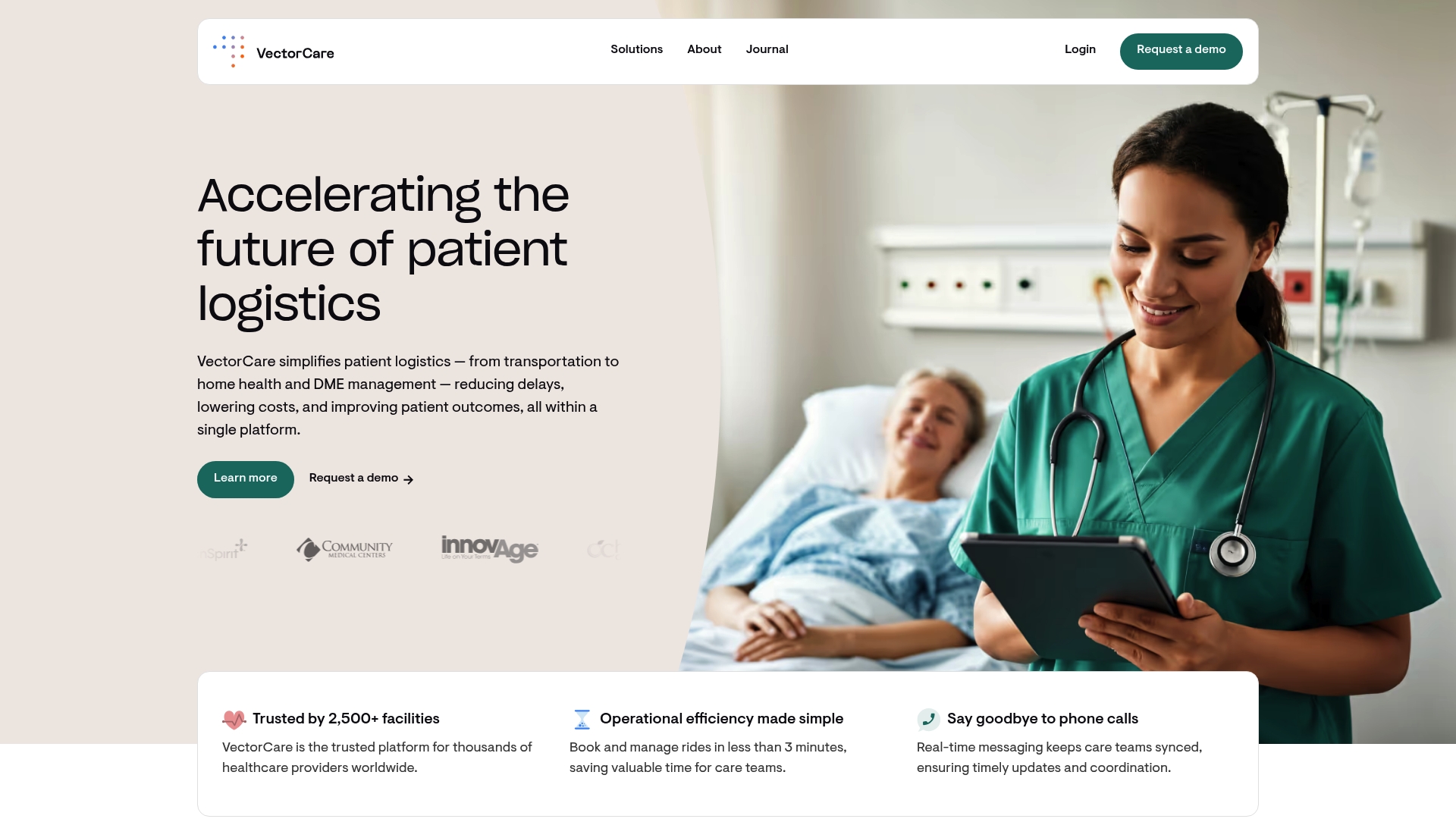
Ready to tackle these challenges head-on and safeguard your patients? VectorCare empowers healthcare teams with an all-in-one digital platform for patient logistics. Our tools harness automation and real-time tracking so you spend less time worrying about logistics and more time delivering care. Discover how scheduling optimization and secure communication can help your organization boost patient outcomes and reduce costly delays. Visit VectorCare’s homepage and find out how our solutions support better workflows for urgent transport and streamline the entire patient transfer process. Take the next step to protect your patients and your peace of mind—explore VectorCare today.
Frequently Asked Questions
What is urgent medical transport?
Urgent medical transport is a healthcare service that rapidly moves patients requiring immediate medical intervention from one location to another, particularly during critical health emergencies.
Why is timely medical transport important in emergencies?
Timely medical transport is crucial because it can significantly reduce mortality rates and prevent complications associated with time-sensitive medical conditions like strokes, cardiac arrests, and severe trauma.
What types of vehicles are used in urgent medical transport?
Urgent medical transport uses various vehicles, including ground ambulances for local transfers, helicopters for quick, long-distance transports, and specialized medical aircraft for inter-hospital patient movements.
What challenges do urgent medical transport systems face?
Urgent medical transport systems face challenges like resource limitations, geographic barriers, technological integration issues, increasing demand for services, and the need for effective cost management.


